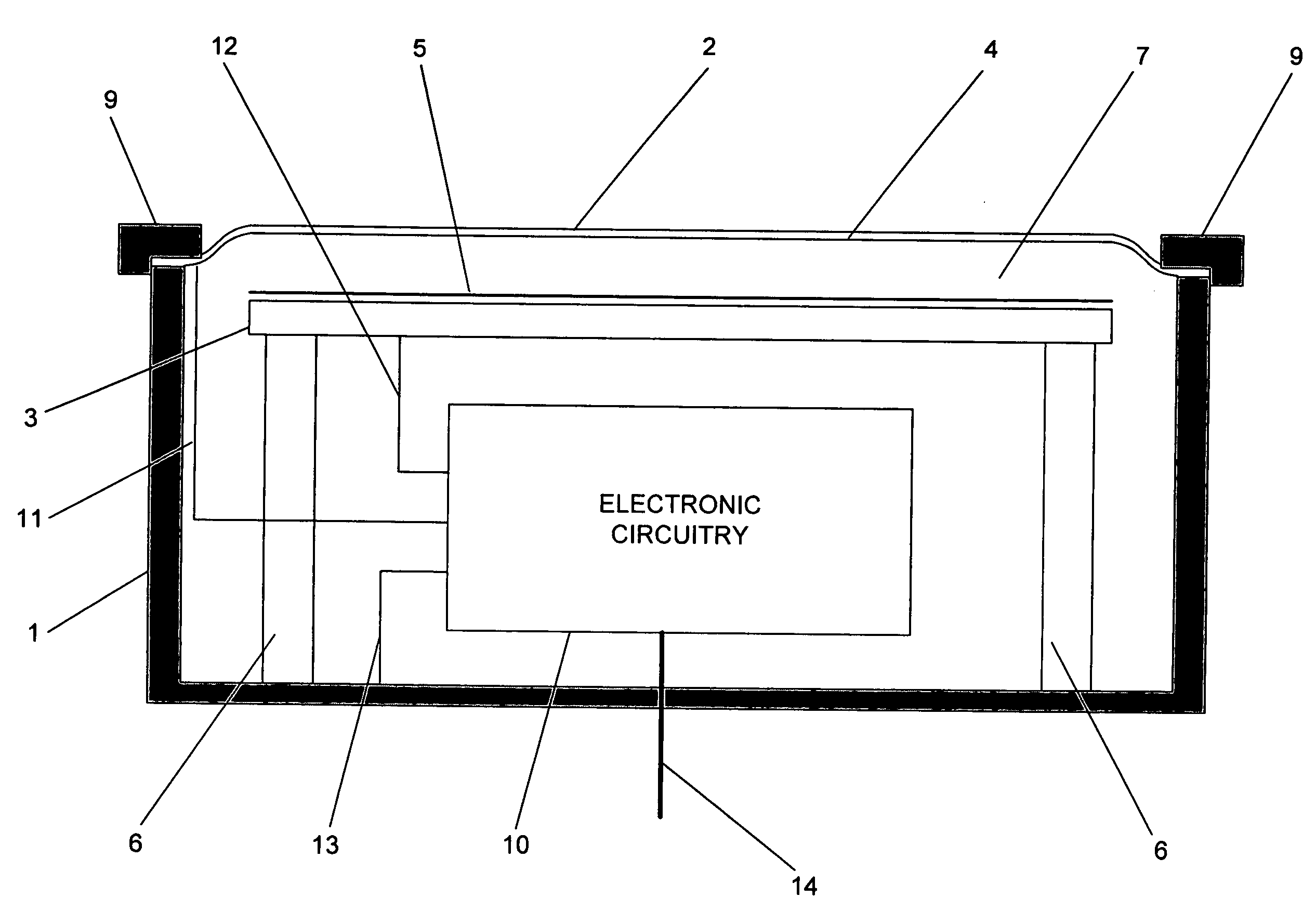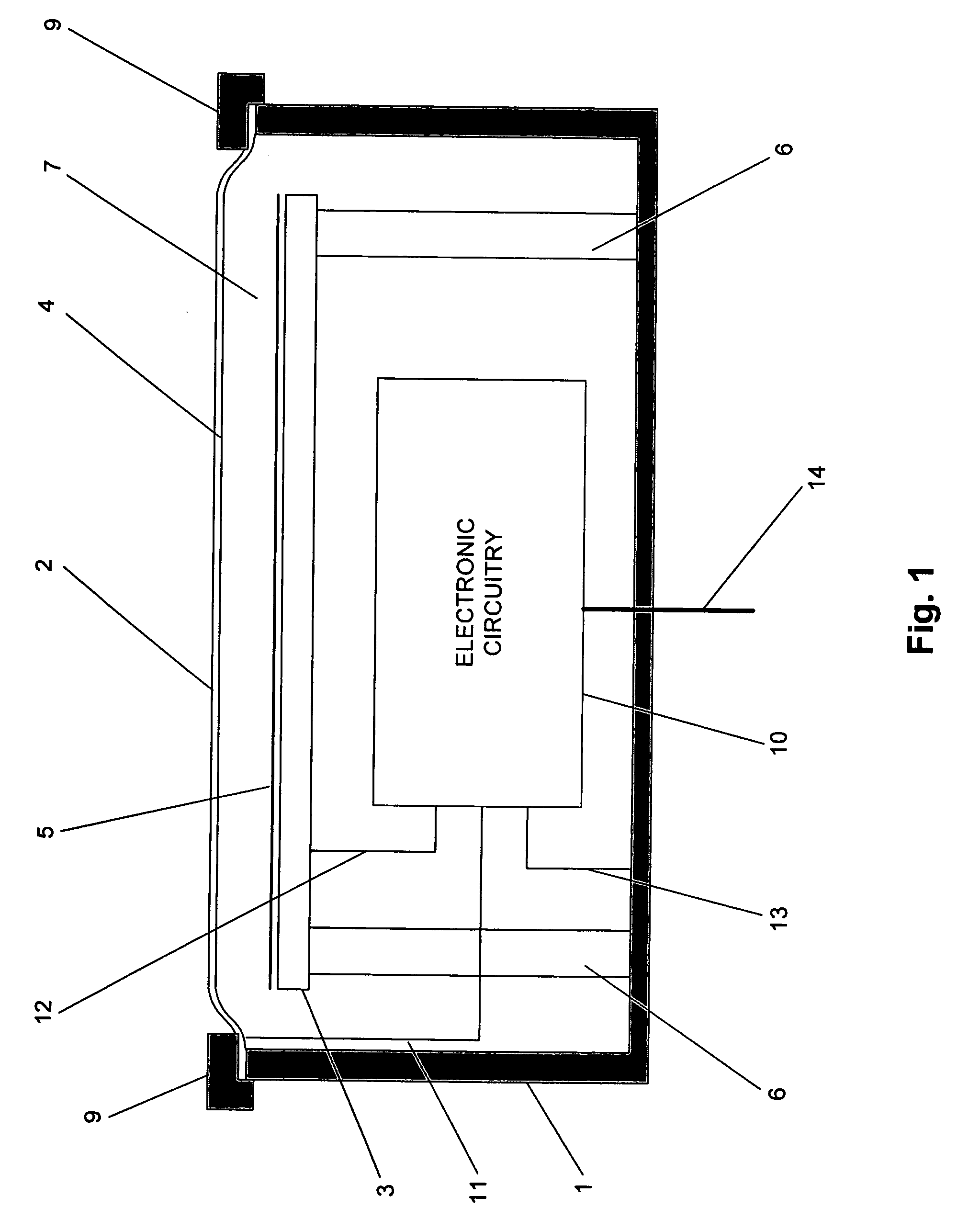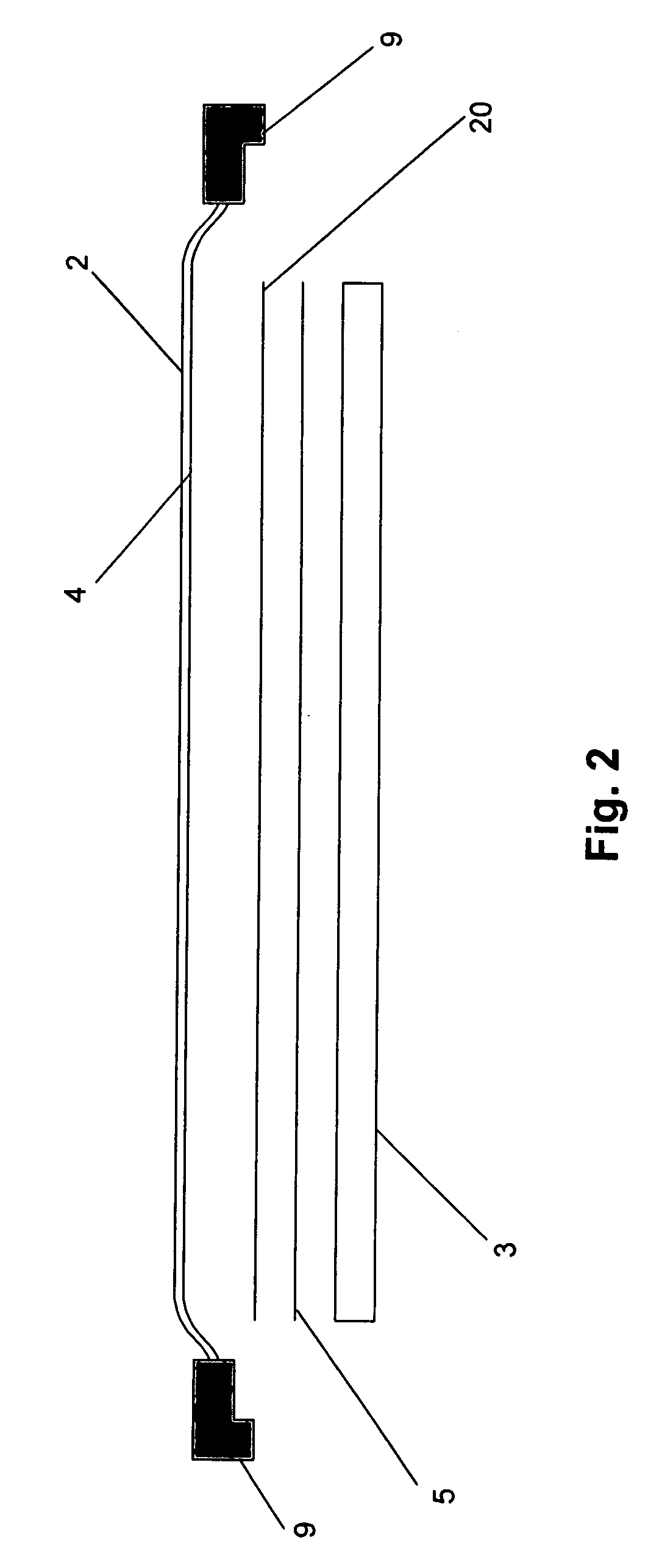Transducer for sensing actual or simulated body sounds
a transducer and body technology, applied in the field of simulated body sounds, can solve the problems of distortion and noise, distortion and noise, and the process of listening to and analyzing body sounds is often difficult to learn, and achieves constant charge, high resistance, and change in capacitance.
- Summary
- Abstract
- Description
- Claims
- Application Information
AI Technical Summary
Benefits of technology
Problems solved by technology
Method used
Image
Examples
Embodiment Construction
[0076]The preferred embodiments are divided into three categories—(a) Capacitive Sensor embodiments, (b) Magnetic Sensor embodiments, and (c) Optical Sensor embodiments. These are all discussed separately below.
[0077]A fundamental aspect of the invention, covering all embodiments, is (a) that the diaphragm makes direct contact with the body for sound sensing, (b) the diaphragm is an integral part of the acoustic-to-electric transducer mechanism rather than simply transmitting sound waves via air to a second acoustic-to-electrical transducer i.e. in this invention the diaphragm motion itself is converted to an electrical signal and (c) the mechanical structure of transducer elements other than the diaphragm do not make direct contact with the diaphragm and hence the conversion means does not impede diaphragm motion or place a mechanical load on the diaphragm.
[0078]The benefit of this method is that the acoustic properties of the diaphragm are essentially the same as those of an acous...
PUM
 Login to View More
Login to View More Abstract
Description
Claims
Application Information
 Login to View More
Login to View More - R&D
- Intellectual Property
- Life Sciences
- Materials
- Tech Scout
- Unparalleled Data Quality
- Higher Quality Content
- 60% Fewer Hallucinations
Browse by: Latest US Patents, China's latest patents, Technical Efficacy Thesaurus, Application Domain, Technology Topic, Popular Technical Reports.
© 2025 PatSnap. All rights reserved.Legal|Privacy policy|Modern Slavery Act Transparency Statement|Sitemap|About US| Contact US: help@patsnap.com



